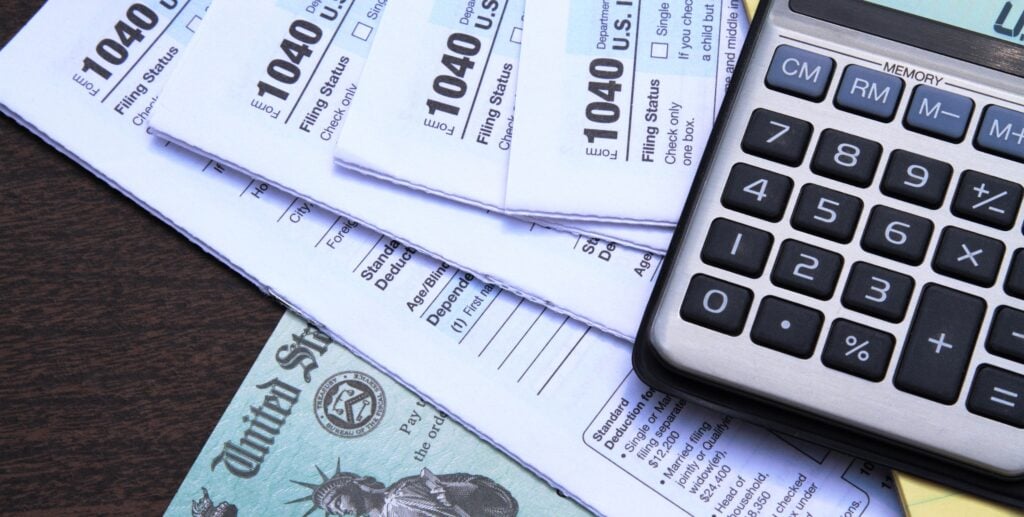
Bonus depreciation lets you maximize your return and minimize your tax liabilities. With bonus depreciation, you can deduct a large portion of the cost of qualifying assets during the year they were placed in service.
Unfortunately, understanding bonus depreciation, how it works, and whether it’s right for your real estate investment strategy is no small feat—but that’s where we come in.
In this guide, we’ll walk you through everything you need to know about bonus depreciation.
What is Bonus Depreciation?
Your assets naturally depreciate over time due to use and general wear and tear. If you run a business, depreciation lets you write off a portion of your asset’s cost during its estimated “useful life” as long as:
- You’re the owner
- You use the asset in your business or other income-producing activity
- The asset’s useful life is greater than one year
In general depreciation, the portion you write off is equal to its estimated useful life. For example, let’s say you remodel the kitchen of your new rental property with cabinets that cost $7,000. Cabinets have a depreciation life cycle of seven years, meaning that you can claim $1,000 in depreciation for seven years.
Bonus depreciation accelerates this process. Instead of claiming $1,000 a year for seven years, you can get a lot more when you claim bonus depreciation. In 2022, you could claim 100{ecd1c82889c5dde6baa4cae2f6d3d4c330bac74c2b880dafaca78809ece33a56} of your cabinet depreciation, meaning you’d get to write off all $7,000 immediately. Then, you can use the money saved via depreciation tax deductions on other things like reinvesting in your business.
Unfortunately, bonus depreciation is already getting phased out, so if you want to take advantage of massive tax write-offs, now’s the time.
How Bonus Depreciation Works
Let’s assume your kitchen cabinets actually cost $10,000. Here’s the phase-down schedule for the depreciation bonus:
| Year | Depreciation Bonus ({ecd1c82889c5dde6baa4cae2f6d3d4c330bac74c2b880dafaca78809ece33a56}) | Claimable Depreciation |
| 2022 | 100{ecd1c82889c5dde6baa4cae2f6d3d4c330bac74c2b880dafaca78809ece33a56} | $10,000 |
| 2023 | 80{ecd1c82889c5dde6baa4cae2f6d3d4c330bac74c2b880dafaca78809ece33a56} | $8,000 |
| 2024 | 60{ecd1c82889c5dde6baa4cae2f6d3d4c330bac74c2b880dafaca78809ece33a56} | $6,000 |
| 2025 | 40{ecd1c82889c5dde6baa4cae2f6d3d4c330bac74c2b880dafaca78809ece33a56} | $4,000 |
| 2026 | 20{ecd1c82889c5dde6baa4cae2f6d3d4c330bac74c2b880dafaca78809ece33a56} | $2,000 |
| 2027 | 1/7 or 14.29{ecd1c82889c5dde6baa4cae2f6d3d4c330bac74c2b880dafaca78809ece33a56} (standard depreciation for the item) | $1,429 |
Note: If you claimed 100{ecd1c82889c5dde6baa4cae2f6d3d4c330bac74c2b880dafaca78809ece33a56} depreciation in 2022, that asset is no longer eligible for a tax deduction. You cannot claim a depreciation total greater than the asset’s price. Also, bonus depreciation is only good for the first year you use the asset. Taking the 80{ecd1c82889c5dde6baa4cae2f6d3d4c330bac74c2b880dafaca78809ece33a56} bonus depreciation for an asset in 2023 is not eligible for the remaining 20{ecd1c82889c5dde6baa4cae2f6d3d4c330bac74c2b880dafaca78809ece33a56} in 2024. You can only claim the asset’s standard depreciation percentage from the second year onward until you claim the full 100{ecd1c82889c5dde6baa4cae2f6d3d4c330bac74c2b880dafaca78809ece33a56}.
Also, before reading on, check to see if your state allows for accelerated depreciation. Some of them don’t, including Florida, Hawaii, California, and New York.
When Did Bonus Depreciation Start, and Why Does It Exist?
Bonus depreciation first became a tax incentive when Congress passed the Job Creation and Worker Assistance Act of 2002. Back then, you could claim 50{ecd1c82889c5dde6baa4cae2f6d3d4c330bac74c2b880dafaca78809ece33a56} depreciation in an asset’s first year of use. Its initial purpose was to encourage businesses to take the money saved via bonus depreciation and reinvest it into the economy after 9/11.
In 2017, Congress passed the Tax Cuts and Jobs Act (TCJA). One of TCJA’s fundamental changes is that assets eligible for bonus depreciation could be claimed in full as long as the property was acquired and placed in service between September 27, 2017 and January 1, 2023. In other words, if you bought and put those $10,000 kitchen cabinets to use in October 2016, you could write off $5,000. In October 2017, you could write off the total of $10,000.
However, TCJA also enacted the phase-out schedule displayed in the table above. Without another act of Congress, bonus depreciation will cease to exist in 2027.
Assets that Qualify for Bonus Depreciation
To qualify for bonus depreciation, assets generally have to have a recovery period or useful life of 20 years or less. Here are some of the most common assets eligible for bonus depreciation:
Residential rental properties with a cost segregation study
Cost segregation is another strategy that helps maximize your depreciation deduction and minimizes your overall tax burden. Cost segregation evaluates the depreciation of specific assets in your rental property, including flooring, cabinets, countertops, appliances, and lighting, to name a few. Given that this is incredibly relevant in the BiggerPockets community let’s dive a little deeper:
You can write off a ton of money in bonus depreciation via a cost segregation study. For example, let’s say you purchase a vacation property with an assessed building value of $275,000. Since residential properties have a useful life of 27.5 per year (which disqualifies them from bonus depreciation), you write off $10,000 in depreciation: $275,000 / 27.5 = $10,000
You also spend $40,000 on interior upgrades eligible for bonus depreciation, putting them all to use in 2023.
Let’s also assume you earn $40,000 in rental income that year and pay 25{ecd1c82889c5dde6baa4cae2f6d3d4c330bac74c2b880dafaca78809ece33a56} in federal income tax.
- Taxes owed without depreciation = $40,000 * 25{ecd1c82889c5dde6baa4cae2f6d3d4c330bac74c2b880dafaca78809ece33a56} = $10,000
- Taxes owed with depreciation = ($40,000 – $10,000) * 25{ecd1c82889c5dde6baa4cae2f6d3d4c330bac74c2b880dafaca78809ece33a56} = $7,500
Thanks to general depreciation, you save $2,500 in taxes. When you include a cost-segregation study, you save a lot more. Your cost-segregated assets eligible for bonus depreciation is $40,000, and in 2023, you can claim up to 80{ecd1c82889c5dde6baa4cae2f6d3d4c330bac74c2b880dafaca78809ece33a56}.
- Cost-segregated assets: $40,000 * 80{ecd1c82889c5dde6baa4cae2f6d3d4c330bac74c2b880dafaca78809ece33a56} = $32,000
- Taxes owed with depreciation and cost-segregation = ($40,000 – $10,000 – $32,000) * 25{ecd1c82889c5dde6baa4cae2f6d3d4c330bac74c2b880dafaca78809ece33a56} = -$500
In this scenario, your cost-segregated assets let you claim a $500 net operating loss, which you carry forward and offset future income.
Qualified improvement property
Qualified Improvement Property (QIP) includes any improvements made to interior portions of non-residential buildings after you’ve placed them in service.
QIP also applies to the interior improvements made to short-term rental properties, thanks to the Coronavirus Aid, Relief, and Economic Security Act (CARES Act).
Additional bonus depreciation qualifiers
Additional eligible assets include:
- Vehicles with a useful life of 20 years or less
- Office equipment and furniture
- Depreciable computer software
- Used equipment that you haven’t used before acquiring
- Water utility properties
- Land improvements such as fencing and parking lots
Assets that Don’t Qualify for Bonus Depreciation
Here are some of the main assets that don’t qualify:
- Primary residences: Your primary residence doesn’t produce income. Therefore, it’s not eligible for general depreciation, much less bonus depreciation.
- Rental and commercial property buildings: Residential properties have a useful life of 27.5 years, while the useful life of a commercial property is 39 years. Both property types exceed the standard 20-year or less bonus depreciation rule.
- Specific vehicles: If a vehicle has a useful life greater than 20 years, it’s ineligible for bonus depreciation.
How to Report Bonus Depreciation on Your Taxes
You can report bonus depreciation by filing IRS Form 4562, “Depreciation and Amortization.” As with other tax forms, you must file by the due date (including extensions) for the taxable year you claim bonus depreciation.
What’s the Difference Between Bonus Depreciation and Section 179 Expensing?
Bonus depreciation and Section 179 share much in common but have a few key differences.
First off, bonus depreciation lets you take a loss on your income, like in the cost-segregation example above. If you use Section 179 and take a loss, you must carry it forward until you have the income to absorb it. Otherwise, you can take the standard depreciation deduction.
Another key difference is that many states don’t allow for bonus depreciation. For example, if you’re a California resident, you can’t claim bonus depreciation, so you might want to consider using Section 179 instead. Different states have different rules for both tax deduction options.
Also, you must write off the total amount available to write off bonus depreciation. If you want to only claim 50{ecd1c82889c5dde6baa4cae2f6d3d4c330bac74c2b880dafaca78809ece33a56} of your bonus depreciation for your 2022 tax year, you can’t. You have to claim the full 100{ecd1c82889c5dde6baa4cae2f6d3d4c330bac74c2b880dafaca78809ece33a56}. With Section 179, you can deduct any amount you choose as long as it’s within the thresholds of that taxable year.
What Are the Pros and Cons of Bonus Depreciation?
At this point, you’re probably aware of some of the main pros and cons of bonus depreciation.
Pros
- Substantial tax deductions: In 2022, you could fully deduct a fixed asset in a single year, even if it’s used (as long as you haven’t used it). Even in 2023, you can still deduct 80{ecd1c82889c5dde6baa4cae2f6d3d4c330bac74c2b880dafaca78809ece33a56}, which is significantly more than standard depreciation would allow.
- Reinvestment opportunities: If you spend $10,000 on cabinets and recoup that investment in the same year, you can reinvest this money in other things. You can buy more equipment, remodel another home, or even put it toward a down payment for another property. With a quick return of your cash on hand, the possibilities are endless.
- Depreciation can be less confusing: If you can claim 100{ecd1c82889c5dde6baa4cae2f6d3d4c330bac74c2b880dafaca78809ece33a56} depreciation on an asset, you won’t have to worry about factoring it into future tax returns. Since you can’t claim the full 80{ecd1c82889c5dde6baa4cae2f6d3d4c330bac74c2b880dafaca78809ece33a56} for any assets purchased and used starting in 2023, you’ll still have to account for this, but it’ll be far less substantial.
- You can claim a loss: If claiming bonus depreciation puts you at a net operating loss, you can carry it forward to offset future taxable income—as long as it remains within the limitations of the TCJA.
Cons
- Lack of future deductions: If you fully deduct an asset, you can’t write it off in future returns. In other words, if you fully deduct your $10,000 cabinets instead of spreading them out over their 7-year life cycle, you won’t earn depreciation on them in years 2-7.
- Could disrupt expected tax returns: Claiming bonus depreciation relieves your tax burden for the year you claim it. However, keep in mind that it’s only for that year. If you account for that, you could be in for a rude awakening when it’s time to pay taxes the following year.
- Claimed losses have limitations: While you can claim a net operating loss, the number of years you can do so is often limited. If you intend on carrying over a loss, make sure you’re planning ahead.
Should You Take Advantage of Bonus Depreciation?
Bonus depreciation can be a tremendous asset (pun intended), depending on your long-term plans. It can give you more cash on hand to reinvest in your business or additional properties, but keep in mind that it’s not “extra” money by any means. You’re simply maximizing your tax write-offs now in exchange for fewer-to-no depreciation in future years.
Typically, having extra cash on hand sooner is a good thing—as long as you have a plan for it.
If you’re wondering how best you can use the extra money you’ve received via bonus depreciation, check out the BiggerPockets Forums. Our community of real estate investors, agents, and other professionals can provide you with some insight.
Not sure how to maximize deductions for your real estate business? In The Book on Tax Strategies for the Savvy Real Estate Investor, CPAs Amanda Han and Matthew MacFarland share the practical information you need to not only do your taxes this year—but to also prepare an ongoing strategy that will make your next tax season that much easier.
Note By BiggerPockets: These are opinions written by the author and do not necessarily represent the opinions of BiggerPockets.





